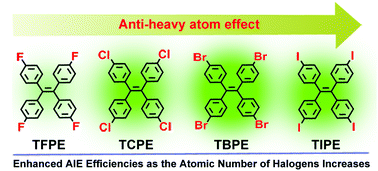Halogenated tetraphenylethene with enhanced aggregation-induced emission: an anomalous anti-heavy-atom effect and self-reversible mechanochromism†
Abstract
Halogenated tetraphenylethene derivatives show a unique anti-heavy-atom effect where introducing heavy halogens like bromine greatly improves the fluorescence quantum yield upon aggregation, contrary to the classic heavy-atom effect. The unique self-reversible mechanochromism of brominated TPE is attributed to re-generation of halogen–halogen bonding after its breakage.



 Please wait while we load your content...
Please wait while we load your content...